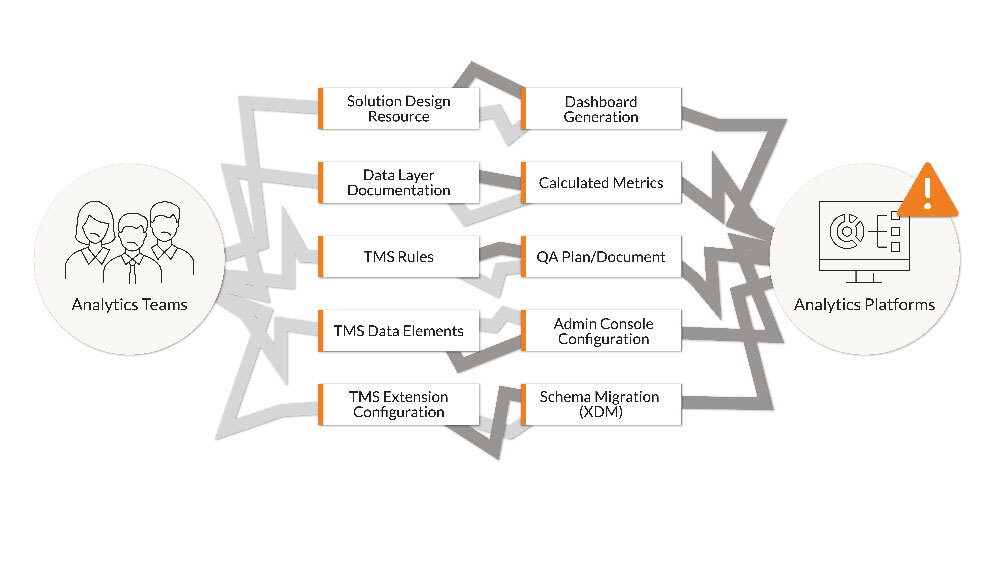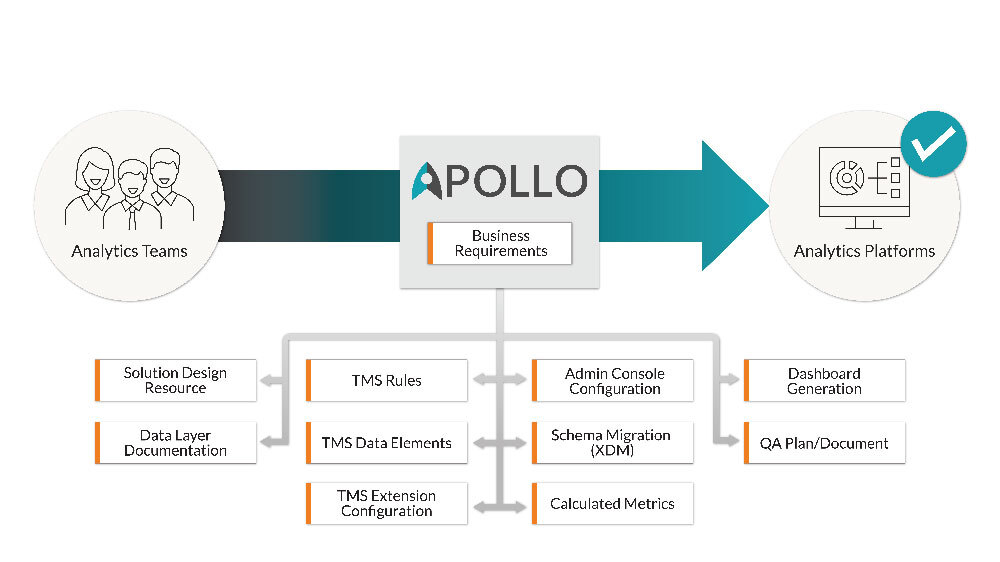See how Apollo’s interconnectivity improves digital analytics implementations and analytics management.
Interconnectivity (noun) – The state or quality of being interconnected
Traditional Data Management Solutions for Analytics
When organizations implement digital analytics products like Adobe Analytics and Google Analytics, there are a lot of moving parts. In fact, to add new items to your digital analytics implementation, you may have to update all of the following implementation components:

This means that anytime you want to make an update to your implementation, you have to make multiple updates. For example, if you wanted to answer a new business question, you would have to:
- Write a new business requirement/user story
- Identify the solution design in your analytics tool
- Update your data layer
- Update your tagging specifications
- Add new variables in your analytics tool and configure them
- Configure new data elements in your tag management system
- Configure new rules in your tag management system
- Possibly add or update extensions in your tag management system
- Populate the data layer for the new data points
- Update your quality assurance plan to validate the data
- Create new dashboards/reports/metrics for reporting
Typically, all of these implementation components and the information about your analytics implementation live in a set of disparate documents and/or systems:

The disconnected nature of these documents and systems often results in analytics implementation documentation being outdated and can result in errors or omissions in implementations. For a large analytics implementation, just managing the handoffs between these documents and systems can be a full-time job!
Interconnectivity FTW!
When we built the Apollo analytics management system, we recognized that the current way of managing digital analytics implementations was antiquated and inefficient. We saw that many of the analytics implementation components outlined above were actually interconnected and built upon each other. What was missing was a way to interconnect these implementation components and apply best-practices. Therefore, we built Apollo upon a relational database that connects all of the components in a logical manner.
As seen here, there is a natural flow to analytics implementation components that exists but hasn’t traditionally been leveraged due to the use of disparate documents and systems. For example, adding a business requirement should automatically bring with it a solution design, data layer elements, tagging specifications, data validation, and reporting. This database approach could also be combined with APIs that allow servers to do the manual work of building out things like tag management systems and dashboards and best-practices learned over the past twenty years.
The interconnectivity provided by Apollo has helped organizations:
- Reduce manual work in building/managing digital analytics implementations
- Increase speed of digital analytics implementations
- Improve quality of digital analytics implementations
- Spend more time using data vs. implementing



